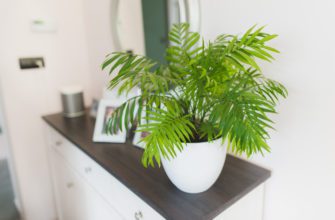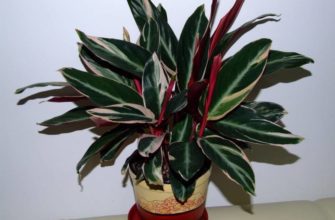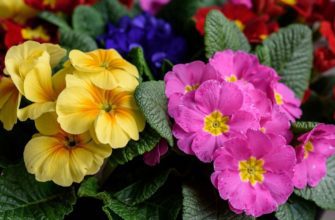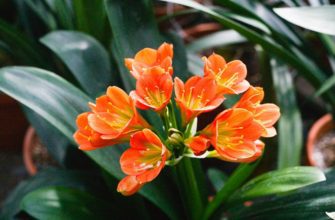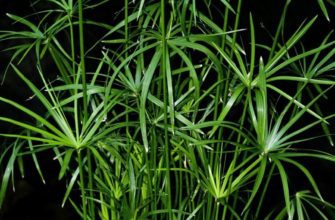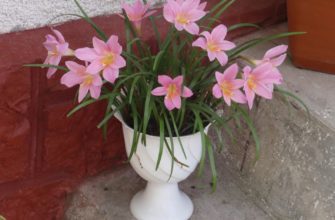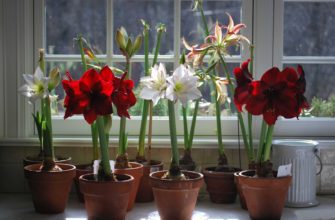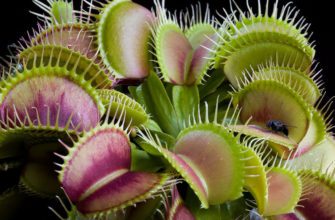Tradescantia indoor is a delightful plant that attracts the attention of gardeners and lovers of indoor plants with its bright leaves and unpretentiousness in care. This exotic flower has become an indispensable decoration of many homes and offices due to its graceful beauty and ability to adapt to various living conditions.
In our article, we offer an extensive overview of indoor tradescantia – an amazing plant that pleases the eye with its unique features and variety of species. We will consider various aspects of caring for tradescantia so that every gardener, whether a beginner or an experienced one, can successfully grow this beautiful flower at home.
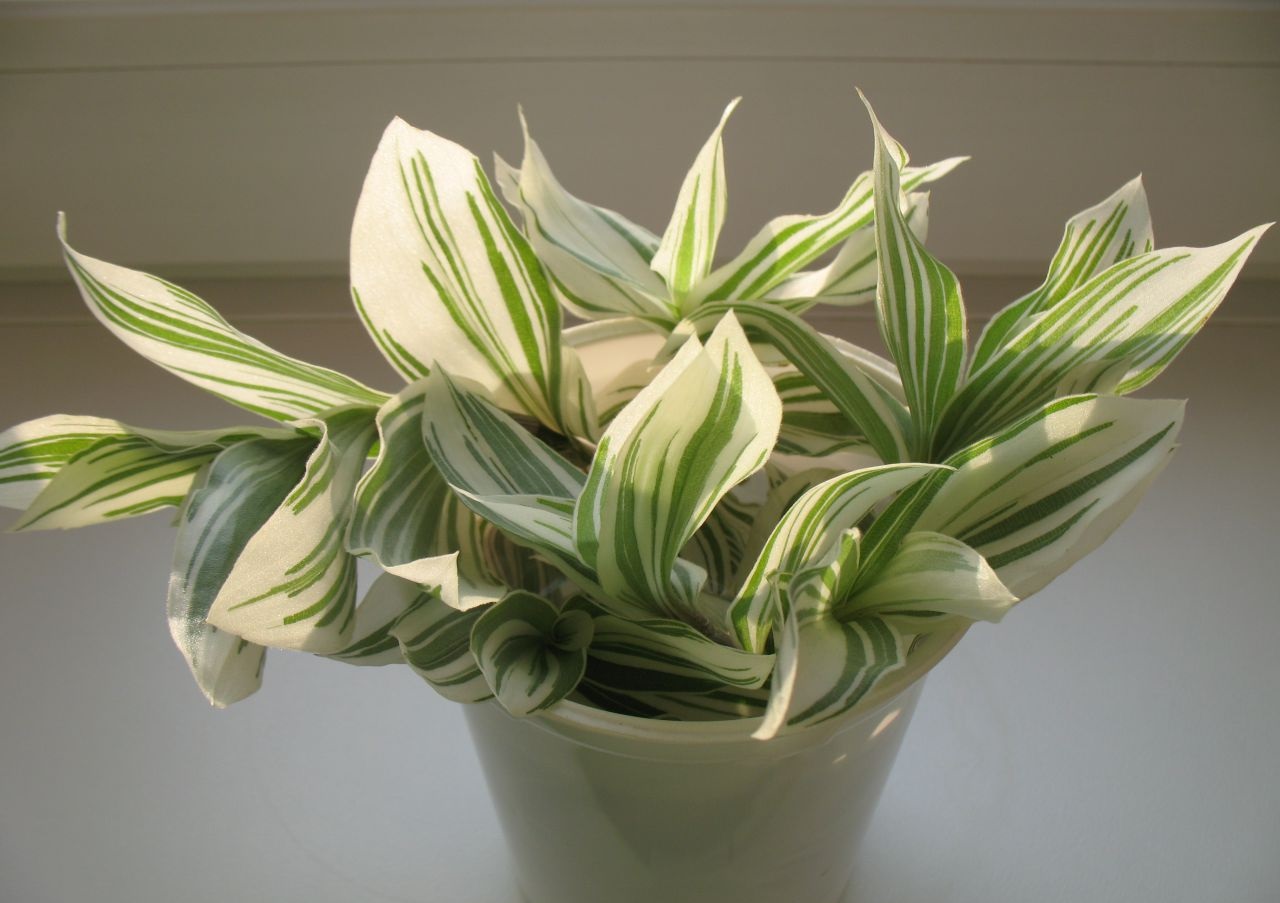
Introducing Tradescantia as a Houseplant
Tradescantia is a magnificent indoor plant that wins the hearts of gardeners with its exquisite beauty and unusual leaves. It looks great in the interior due to its elegance and variety of color options. As a true star among indoor plants, tradescantia knows how to attract attention with its exoticism and unique appearance.
One of the most attractive features of Tradescantia is its diversity of species. From varieties with snow-white leaves and green specks to those decorated with bright stripes and spots of various shades, each Tradescantia is unique and unlike the other. This flower can emphasize the individuality of your interior and add a unique charm to it.
Tradescantia also has other benefits that make it especially popular among gardeners. Not only does it attract attention with its appearance, but it also easily adapts to indoor conditions. This plant is able to grow and thrive even in shady corners, making it an ideal choice for rooms with limited access to sunlight.
Another advantage of tradescantia is its unpretentiousness in care. It does not require special attention and care, which makes it accessible even for novice gardeners. Regular watering, maintaining optimal air humidity and periodic fertilization - and this will be quite enough for the tradescantia to please you with its beautiful appearance.
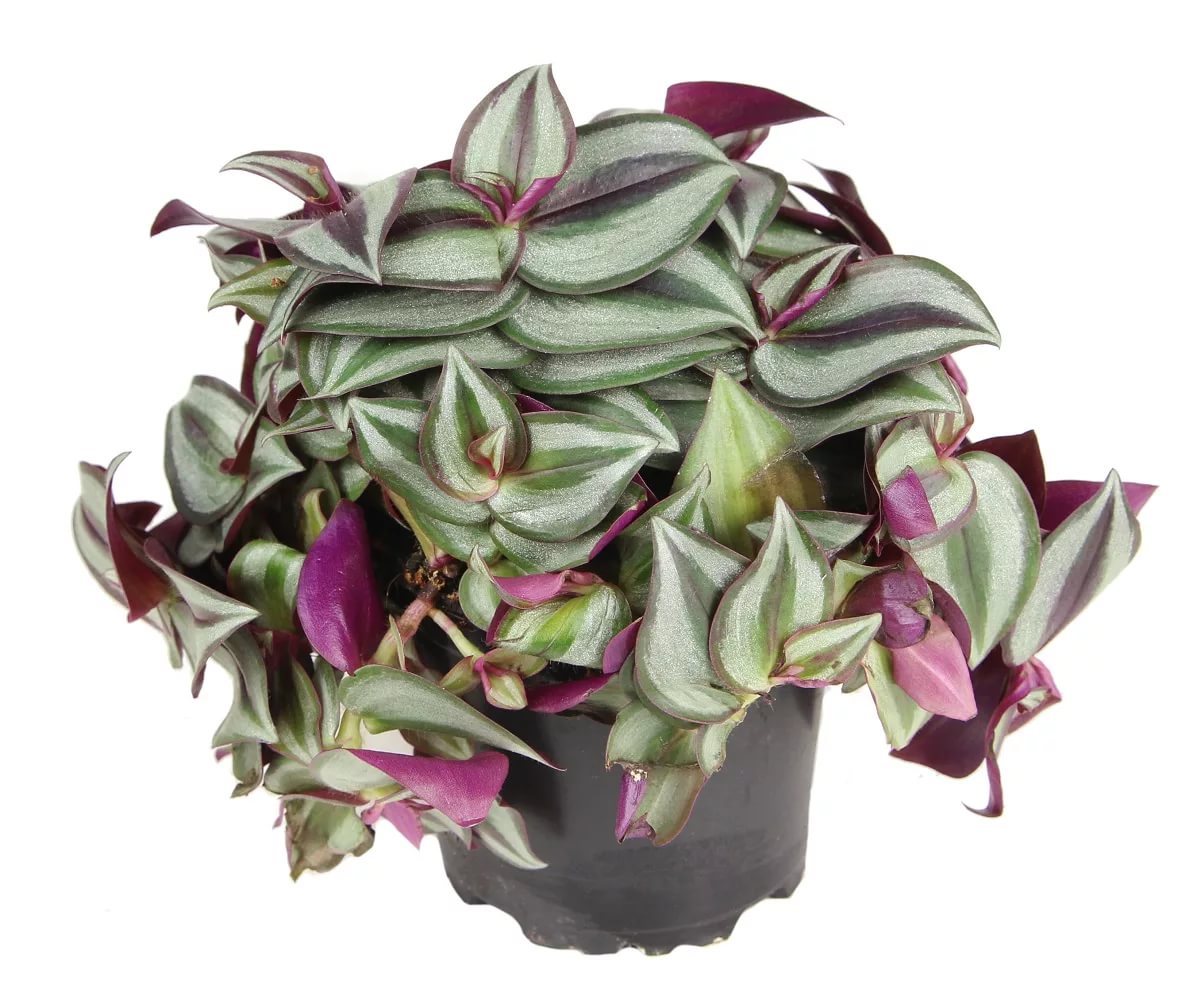
Types of home Tradescantia
The home tradescantia is a real treasure among indoor plants, with an amazing variety of species. Each type of tradescantia is unique and attractive in its own way, making it a popular choice among gardeners and connoisseurs of exotic beauty.
- Golden Spiderwort (Tradescantia fluminensis): This species attracts attention with its beautiful green leaves, decorated with golden stripes. It has high decorative value and is ideal for creating contrasting compositions in the interior.
- Tradescantia multiflora: The impressive variety of colors makes this type of tradescantia a truly attractive decorative element. Flowers can be white, pink, lilac or blue, which gives the plant a special charm.
- Tradescantia zebrina: Shagreen is an extremely popular species of Tradescantia, famous for its vibrant purple or blue leaves with silver stripes. It looks great on windowsills and in hanging pots.
- Tradescantia spathacea: This species of Tradescantia has attractive dark green or purple leaves with a reddish tint. It has outstanding decorative characteristics and looks great in tropical-style interiors.
- Tradescantia sillamontana: The bushy Tradescantia is distinguished by its felt-like texture of leaves and silvery hue. This plant looks great in modern interiors and has a special aura of mystery.
- Tradescantia grandiflora: It has bright purple flowers with white stripes. This type of tradescantia is attractive for its large flowers and is suitable for creating bright accents in the interior.
- Tradescantia spathacea 'Purpurea': Another beautiful species with dark purple leaves that become especially vivid in bright light. It will give your home an atmosphere of coziness and exoticism.
Each of these types of Tradescantia has its own unique appearance and appeal. By choosing one or more varieties, you can create an interior filled with brightness and beauty. Tradescantia is not only a beautiful plant, but also a wonderful way to add a fresh accent to your home and give yourself the joy of watching it grow and develop.
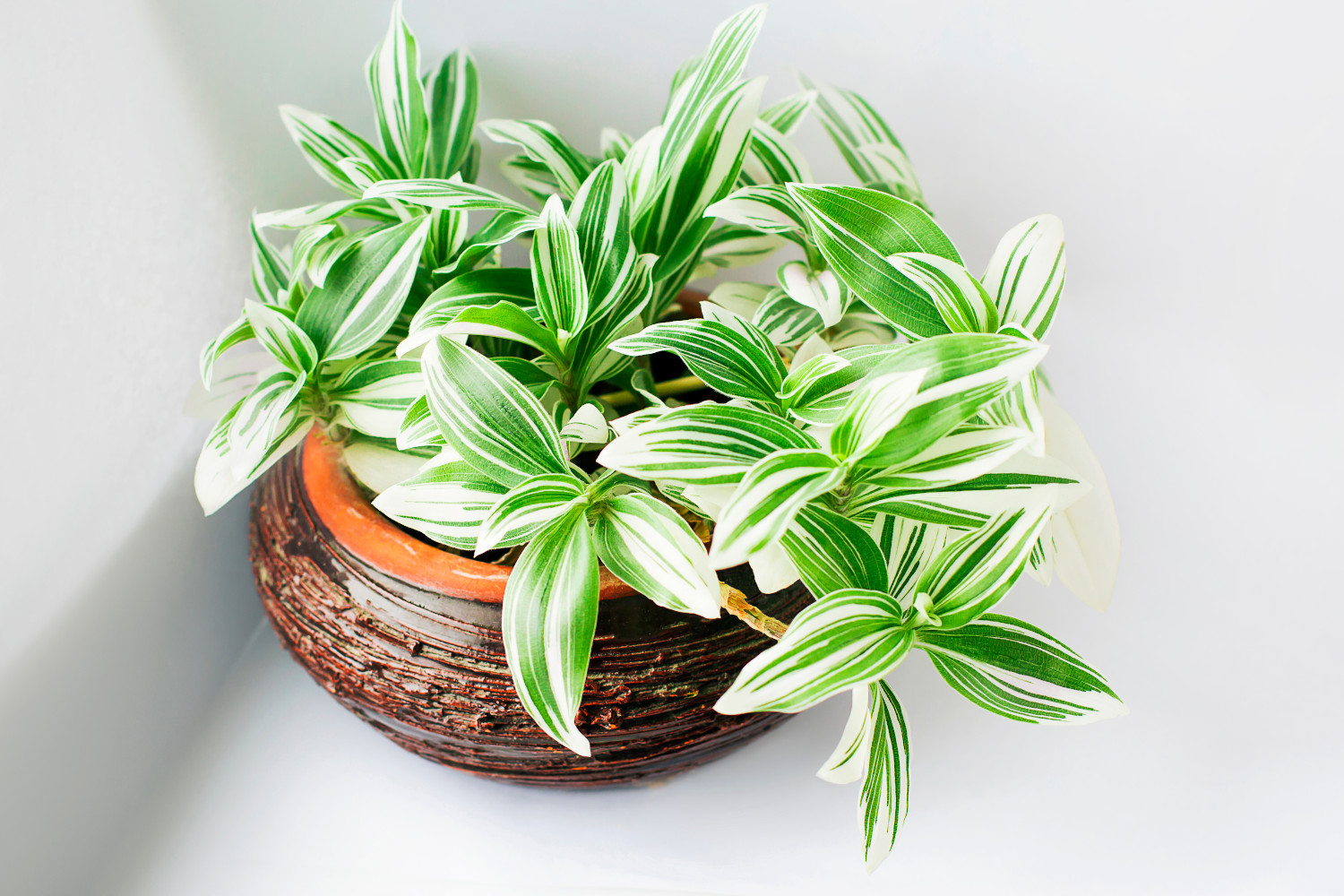
Caring for Tradescantia at Home
Below we will describe how to care for tradescantia at home:
- Place your spiderwort in bright but indirect sunlight. This will help the plant get enough light for photosynthesis, but avoid direct sunlight, which can burn the leaves.
- Water your Tradescantia regularly, keeping the soil moist. The main rule is to not let the soil dry out between waterings, but also to avoid stagnant moisture. It is important to check the top layer of soil before watering the plant. If the soil feels dry to the touch, it is time to water.
- Ensure good ventilation around the Tradescantia. Opening windows or using a fan will help ensure constant air movement, which will prevent moisture from accumulating around the plant and the development of fungal diseases.
- Regularly remove dead or diseased leaves. This will help prevent the spread of disease and give the plant a more well-groomed appearance. Use sharp, clean scissors or a pruning knife to avoid damaging the trunk or healthy leaves.
- Fertilize your spiderwort if necessary. Use a general-purpose liquid fertilizer for indoor plants, applying it according to the instructions on the package. Do not overdo the fertilizer dosage to avoid overcomplicating the soil, which can lead to plant diseases.
- Turn the Tradescantia over every few months to ensure even lighting on all sides of the plant and to prevent the stems from fighting each other towards the light.
- Regularly inspect your spiderwort for pests such as aphids, mealybugs, and mites. If signs of pest infestation are found, use natural or chemical methods to eliminate them and prevent reoccurrence.
These are just some tips for caring for Tradescantia at home. Each plant requires an individual approach, so it is important to observe your Tradescantia and respond to its needs over time.
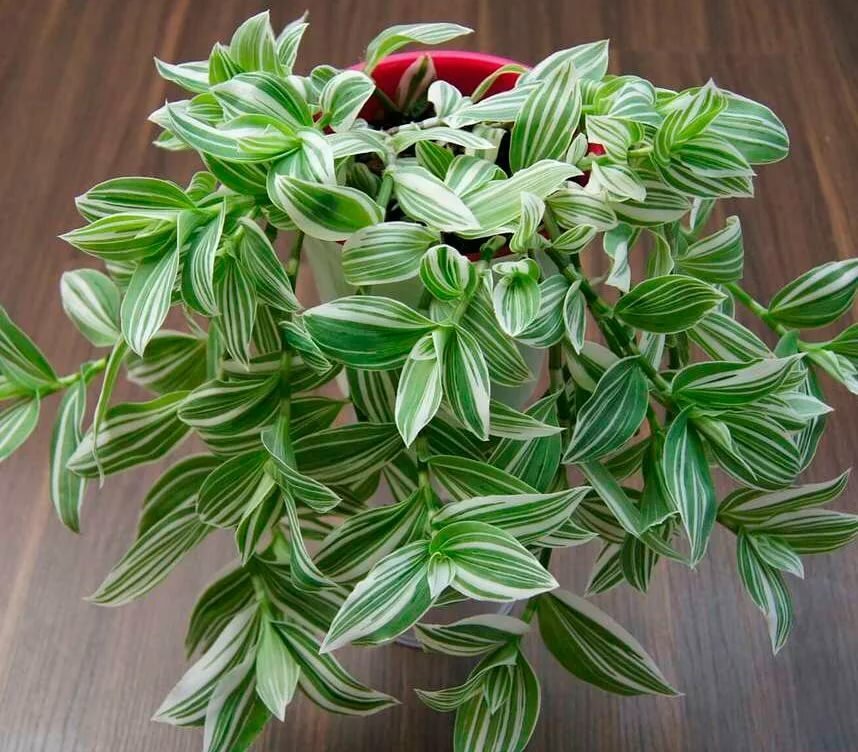
Flowering and propagation of Tradescantia
Flowering and propagation of home tradescantia are amazing aspects that make this plant even more attractive to gardeners. The variety of colors and propagation methods allow you to fully reveal the potential of tradescantia, giving it new colors and possibilities.
Tradescantia blooming:
The blooming of tradescantia is a real spectacle. Depending on the species, the flowers can be of different shades: white, pink, lilac, purple or blue. They reveal their beauty on long peduncles, giving the plant a sophisticated look. Tradescantia usually blooms in spring and summer, but some species can delight with their flowers at other times of the year.
Reproduction of Tradescantia:
Home Tradescantia can be propagated in various ways, each of which has its own advantages:
- Cuttings: Cut a healthy shoot from the tradescantia and place it in moist soil or a glass of water. After a while, the shoot will develop roots and can be transplanted into a separate pot.
- Dividing the bush: An adult plant with several stems can be divided into several individual specimens and transplanted into separate pots.
- Seed method: The possibility of propagation by seeds also exists, but this is a more labor-intensive process that requires certain conditions for successful germination.
Once you have propagated the spiderwort and it has taken root, expect the first bloom. The joy of watching the bright flowers bloom will give you unforgettable moments, and you will be able to enjoy the beauty of this delightful plant in your home.
Thus, the flowering and reproduction of the indoor tradescantia are wonderful stages in the life of the plant, giving it a special appeal and adding variety to your collection of indoor plants. Thanks to these unique processes, the tradescantia becomes a real decoration of your home and a gift for the eyes and soul.
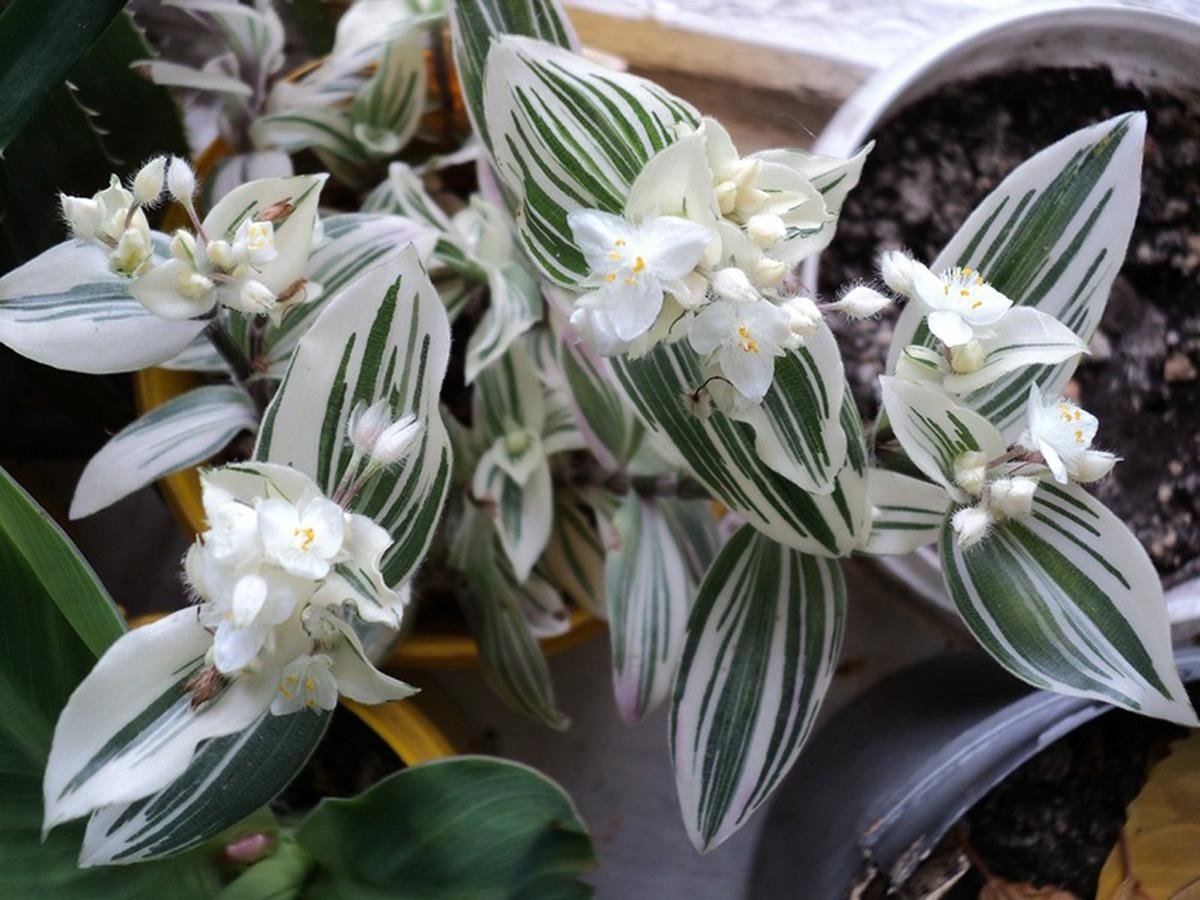
Problems and diseases of tradescantia
Tradescantia is undoubtedly a beautiful and resilient plant, but like all other plants, it may encounter some problems and diseases. Knowing these problems will help you react in a timely manner and prevent negative consequences for your tradescantia. Here are some of the most common problems and diseases that can be encountered when growing tradescantia:
- Overwatering of the soil: Over-saturation of the soil with moisture can lead to rotting of the roots and stems of the Tradescantia. To prevent this problem, ensure proper watering and a good drainage system in the pot.
- Spider mite: This is one of the most common pests of Tradescantia. Webbing and yellow spots on the leaves may indicate the presence of spider mites. Try to maintain sufficiently high humidity to prevent their occurrence.
- Black rot: This fungal disease can affect the leaves of spiderworts, causing spots and rot. It is caused by excess moisture and poor ventilation. To prevent black rot, avoid overwatering and make sure the plant is in a well-ventilated area.
- Yellowing leaves: Yellowing leaves can be caused by various factors, such as overwatering, nutrient deficiencies, or insufficient light. Research possible causes of yellowing leaves and take appropriate measures.
- Incorrect conditions: Improper care conditions can cause a variety of problems for Tradescantia, including slow growth, lack of blooms, and poor plant health. It is important to monitor Tradescantia's needs for light, water, temperature, and humidity to ensure optimal conditions.
If you notice any problems with your Tradescantia, it is important to react immediately and take appropriate measures to prevent the problem from spreading and to save the plant's health. Timely care, observation, and proper response will help keep your Tradescantia healthy, beautiful, and delighting you with its bright colors.
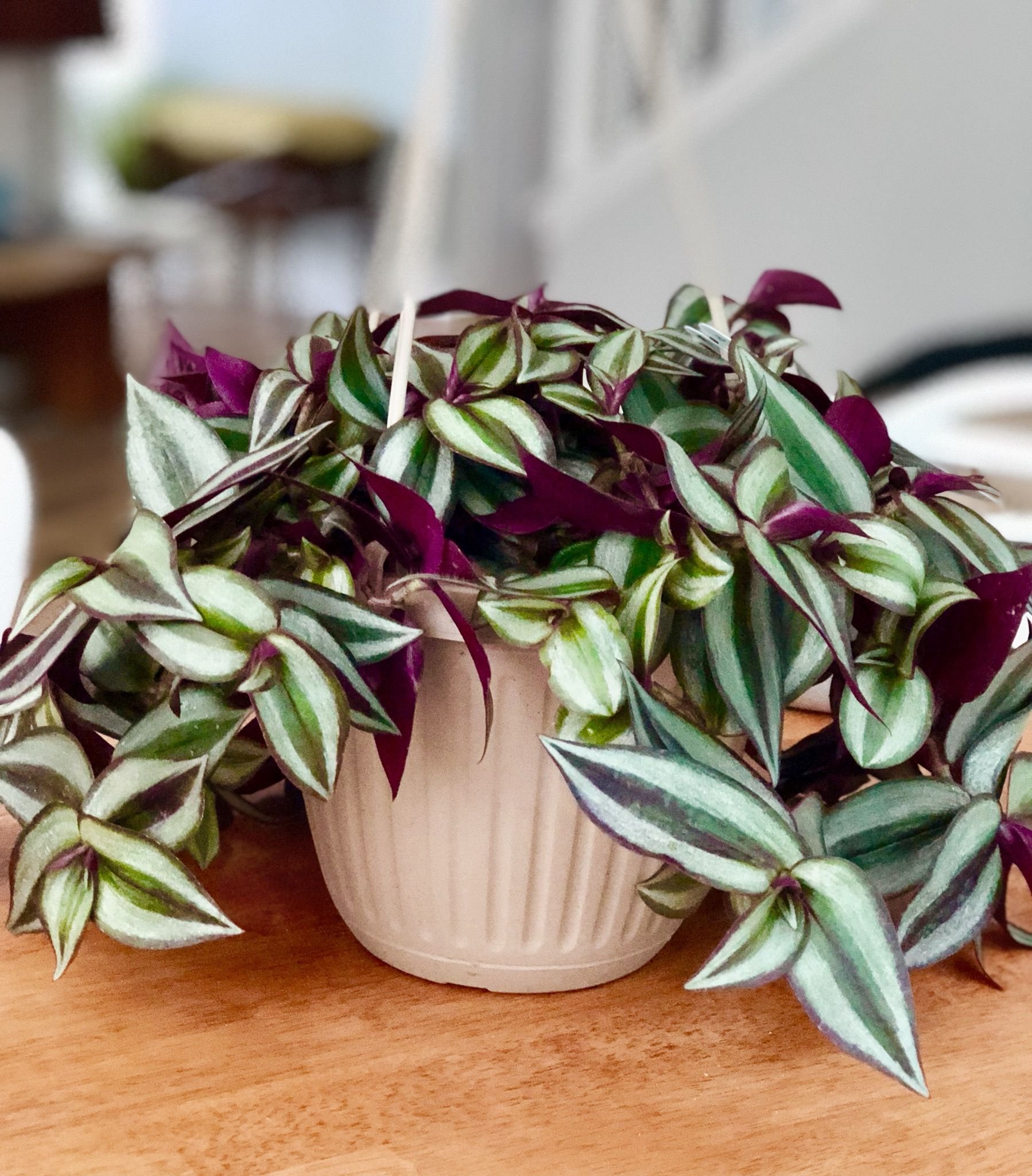
Pot for tradescantia
Tradescantia is a large and tall plant, so it will require a large and sturdy pot. Here are some important factors to consider when choosing a pot for your Tradescantia:
- Size: Because of its luxurious growth, tradescantia needs enough space for the roots. Choose a pot that has a sufficient diameter and depth for the development of the root system. The optimal pot size for an adult tradescantia is about 30-40 centimeters in diameter.
- Material: You can choose a pot made of different materials, such as clay, ceramic, plastic or wood. Each material has its own advantages. Clay or ceramic pots have good air permeability and help prevent excess moisture retention. Plastic pots are lightweight and easy to maintain. A wooden pot can create a natural and exotic atmosphere, but requires special care to avoid rotting.
- Drainage system: Make sure the pot you choose has drainage holes at the bottom. This will allow excess moisture to drain freely and avoid excess moisture from accumulating, which can lead to root rot.
- Style and decor: Tradescantia is a very decorative plant, so choose a pot that matches your interior and highlights the beauty of the plant. You can choose a pot with bright colors or a unique texture to add visual interest.
- Growing and transplanting: Keep in mind that spiderwort grows quickly and may require repotting into a larger pot. If you plan to repot the plant over time, consider choosing a pot with a wide diameter to avoid frequent repotting.
Consider these factors when choosing a pot for your spider plant and remember that plants need care and love to grow healthy and beautiful.
Conclusion
Tradescantia indoor is a magnificent flower that amazes with its beauty, unique leaves and ease of care. In this article, we have considered the variety of types of tradescantia and provided a detailed overview of the features of each of them. We hope that now you can easily make a choice and choose the option that is ideal for your home or office.
Proper care is key to the health and beauty of Tradescantia. We have discussed important aspects of care, such as watering, lighting, temperature, humidity and fertilizing. Following our recommendations and advice, you will be able to create optimal conditions for the growth and prosperity of this beautiful flower.
We also looked at methods of propagating tradescantia, which will allow you to increase the number of plants or give beautiful specimens to your loved ones. Choosing the right pot also plays an important role in caring for tradescantia, and we talked in detail about how to choose the right one and provide a good drainage system.

